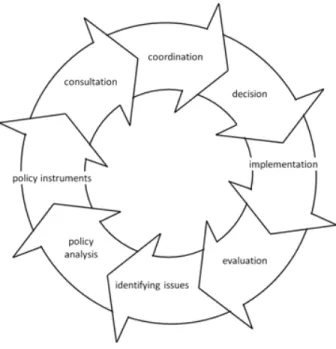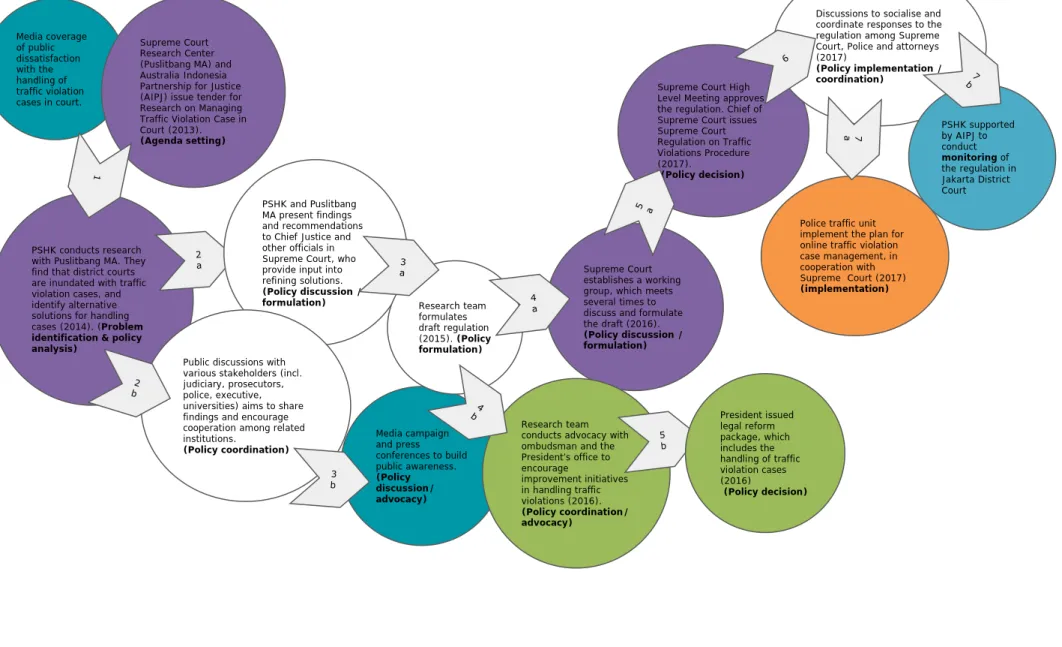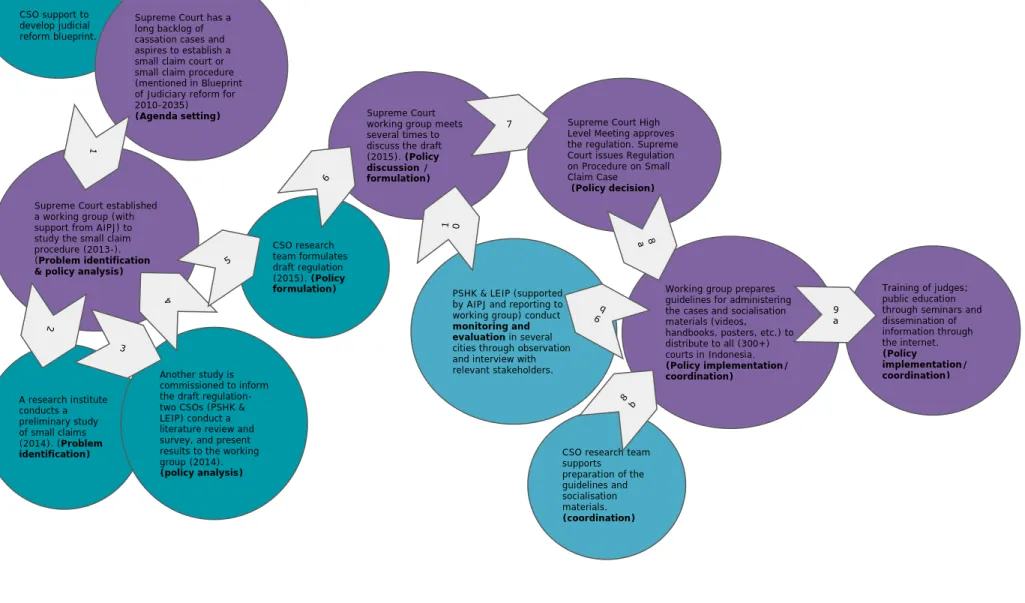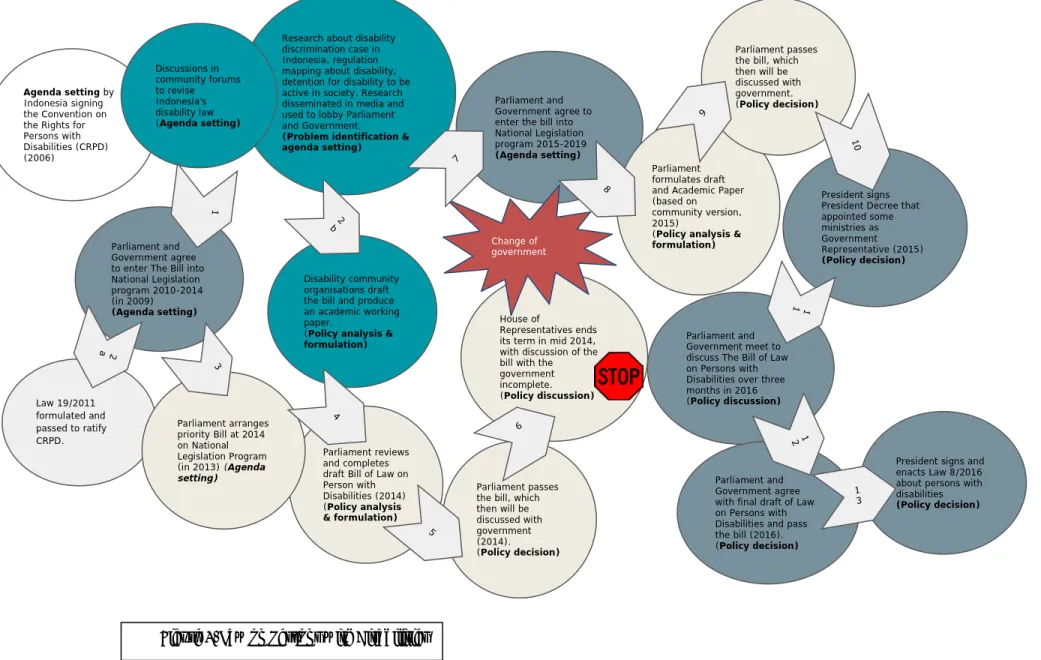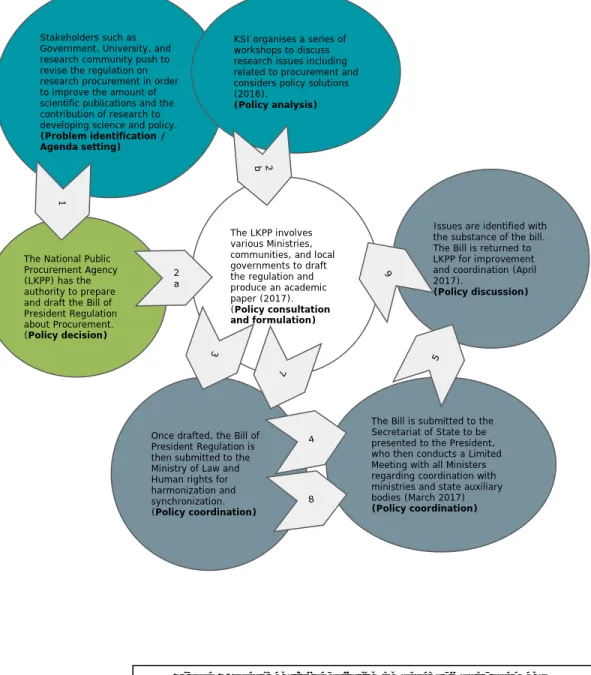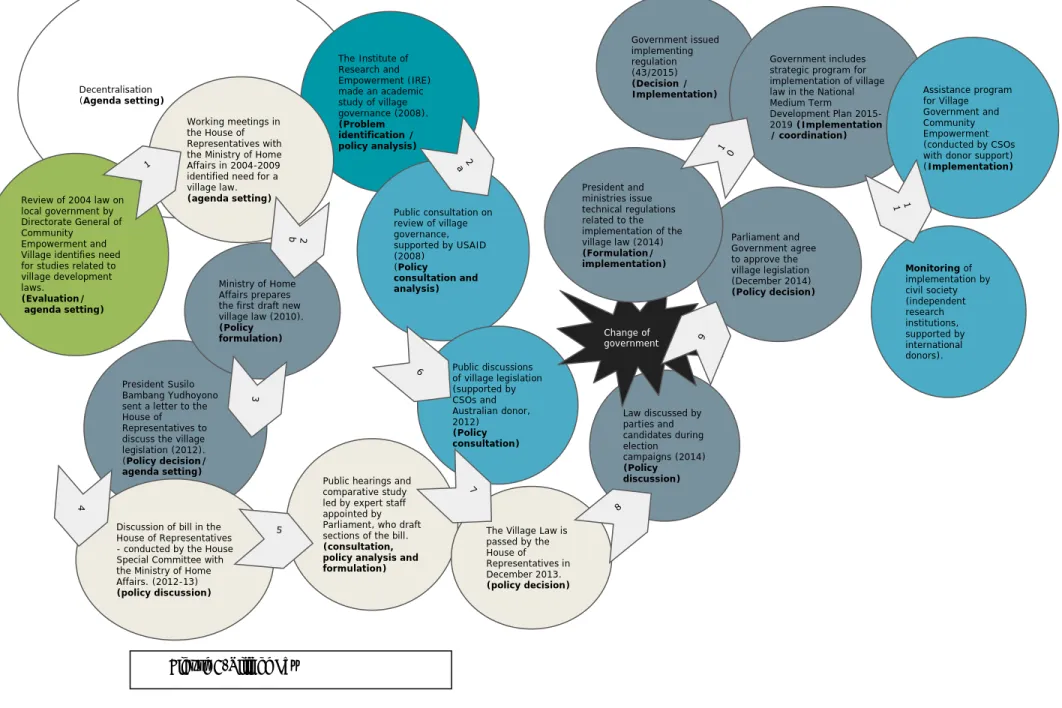Evidence from this study suggests that the steps of the policy cycle – from agenda setting to policy evaluation – do not reflect the actual practice of policy making in Indonesia. The overall process of policy making in Indonesia cannot be accurately depicted as a cycle, supported by the rationality of applied problem solving. 5 The overall process of policy making in Indonesia cannot be accurately depicted as a cycle supported by rational problem solving.
Introduction
Methodology
The examples allow us to pinpoint the specific activities that actually took place in the policy-making process, rather than a more general discussion that may be constrained by formal policy-making frameworks such as the 'policy cycle' model or Indonesian laws that specify how let the policy be formulated. . This combination of academic and practice-based literature, expert consultations and policy vignettes allows our analysis to go beyond the 'policy cycle' and consider other ways of understanding the political process in Indonesia.
The concept of the policy cycle
In summary, there is a substantial literature that offers alternatives to the policy cycle as a model for the policy process. A gap remains in the literature devoted to understanding the political process in the context of developing countries. We will then return to the question of which model of the political cycle, if any, best explains the political process in Indonesia.
Policymaking in Indonesia: structures and traditions
Each bill must be accompanied by an academic article (naska academis), which “must contain a detailed explanation of the matters to be addressed, including a breakdown of all clauses” (Datta et al. 2011, 11). Each MP belongs to one of the DPR's eleven sectoral committees, which are in regular contact with their respective ministries and agencies (Blöndal, Hawkesworth and Choi 2009, 31). Since the fall of the authoritarian regime, there have been significant reforms of the judicial system, starting with the establishment of the Supreme Court as independent of the executive and legislative branches of government in 1999.
Specific cases of judicial reform as policy are discussed in the next section of the paper, together with examples of policy processes involving the other two branches of government – the executive and the legislature – which often work closely together. Each district has a local house of representatives (DPRD) and an elected head of government (governor, regent or mayor), who submits draft of the development budget and other plans to the DPRD for approval. As Datta et al (2017, 8) summarize, in their review of Indonesia's recent political history, 'although the formal centralized system broke down, many of the existing political relationships and practices remained intact, leading to a more competitive , complex and often confusing set of political relationships.'.
The compilation of these voluminous documents 'is a resource-intensive process' (Datta et al. illustrating some of the cumbersome formal requirements and tensions between the different levels and branches of government in the policy process. A legacy of the centralized authority of Soeharto 's authoritarian regime, development planning in Indonesia is seen to have fueled Indonesia's impressive economic growth since then. As Pramusinto argues: 'Budget allocation in Parliament requires bargaining and intensive negotiation.'The Budget Committee is a permanent part of the legislature, which exists from members taken proportionally from all factions in parliament.
The illegal fundraising of the political elite, writes Marcus Mietzner (2015), led to an oligarchic system of party politics and the misappropriation of state budgets. Recent research by Datta et al demonstrates the influence of the World Bank on higher education policy, while Rosser 'pointed to the way in which parents, teachers and their NGO allies were able to influence education policy-making through lobbying. Some of the experts we consulted suggested that the policy cycle model was more likely to be followed in cases where an organization with 'technocratic' expertise, such as the World Bank, was highly involved.
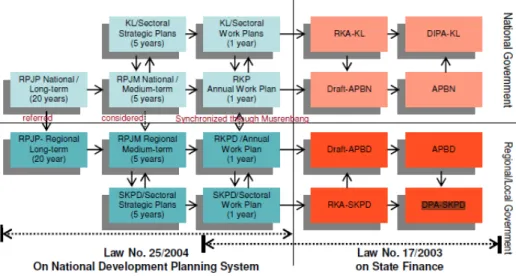
Indonesian policymaking in practice: actual examples of policy processes
When the mandate of the House of Representatives ended in mid-2014, the discussion of the bill was incomplete and the legislative process had to start again with the new government in 2015. The bill was submitted to the executive for coordination and policy discussions, but as of May 2017, was returned to the LKPP to improve. Media activities by the coalition supporting the bill -> an academic publishes an influential column in daily newspapers (2013).
The Supreme Court established a working group (with the support of AIPJ) to study the small claims procedure (2013-). The Parliament and the Government agree to introduce the Bill into the program of National Legislation in 2009) (Setting the agenda). Parliament considers and completes the Disability Bill (2014) (Policy analysis . & wording) Disability community organizations draft the bill and issue an academic working paper.
Representatives will finish their term in mid-2014, where the discussion of the bill with the government is incomplete. The Danish Parliament and the government meet to discuss the bill on persons with disabilities over three months in 2016 (political discussion). The Danish Parliament and the government agree on the final draft of the Act on Persons with Disabilities and adopt the bill (2016).
The National Public Procurement Agency (NPPA) has the authority to prepare and draft the Bill Regulation on Procurement. Policy decision) Stakeholders such as the government, university and research community are pushing to revise the regulation on research acquisition in order to improve the amount of scientific publications and the contribution of research to the development of science and policy. The Bill is sent back to LKPP for improvement and coordination (April 2017). Policy discussion) KSI organizes a series of. Public hearings and comparative study led by expert staff appointed by Parliament, who draft parts of the bill. consultation, policy analysis and formulation) Decentralization.
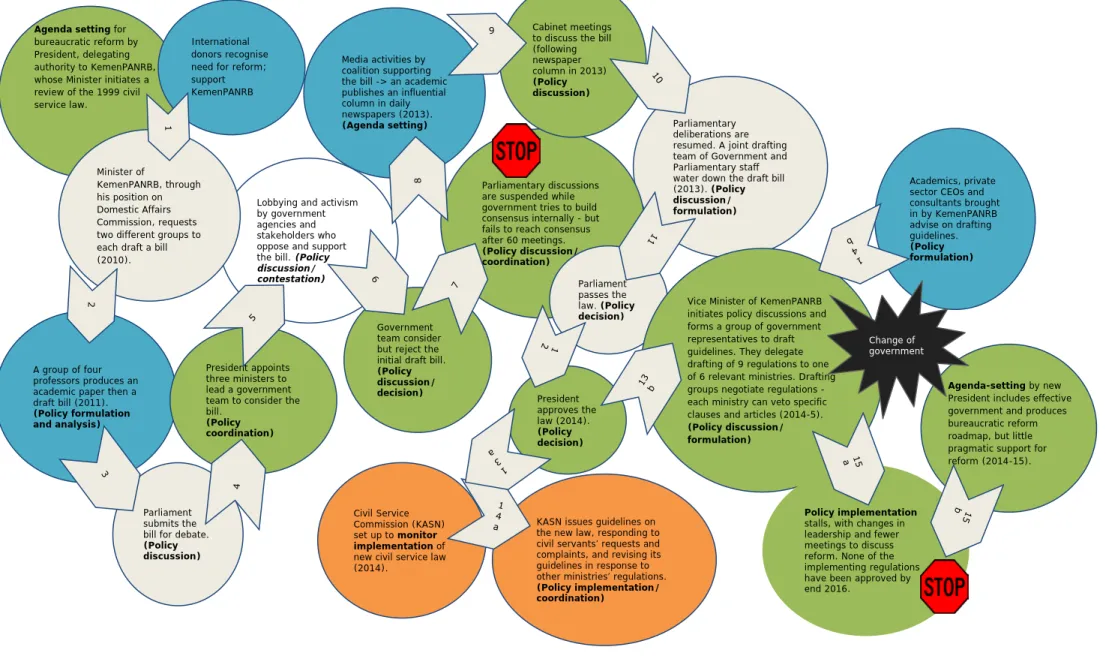
Discussion: is there an Indonesian policy cycle?
There was little evidence that the government formulated high-level strategies and then chose instruments accordingly. In that case, the research team identified three possible solutions to the issue of traffic violation case processing and chose not to rely on the Supreme Court alone to develop the policy solution. While waiting for discussions to take place in the Supreme Court Working Group, the research team led a media campaign and held advocacy meetings with the Ombudsman and the Office of the President, which resulted in the issue becoming part of the President's law reform package, as well as a new Supreme Court Order.
Contrary to the theoretical model of the policy cycle, policy coordination does not necessarily wait until a policy document or instrument is drafted. A single policy may also require different implementation modes and phases, and one aspect of a policy may be implemented (e.g. the creation of the Civil Service Commission / KASN) while the broader approach stalls (e.g. ). In theory, after a policy is implemented, evaluation should take place to determine the effectiveness of the policy and decide what action to follow.
The selected policies were shaped by different competing interests and actors with differentiated power and ability to influence the policy process. Various groups formed coalitions to shape agendas and influence policy, but these coalitions were not stable or permanent. The ACF model assumes stable parameters and a fixed forum (policy subsystems) for policy making, but in reality. The dustbin model, and subsequent multiple streams analysis, emphasizes the complex interaction of factors that bring an issue to the forefront of the policy agenda and make governments receptive to agenda change (John 2012; Tiernan and Burke 2002; Howlett, Ramesh, and Perl 2009 ).
Political discussions and negotiations are an important part of policy making in the legislative and executive branches of government.
Conclusion
35 argumentative approach to policy analysis typically points to the fact that rationalist methods borrowed from physical or natural sciences – and models such as the 'political cycle' – cannot explain action in the political field (Fischer 2003; Hajer and Wagenaar 2003; Hajer and Laws 2008). The practice turn recognizes the political context of politics and the diffusion of power and knowledge in this area. It similarly “undermines managerial or technical understandings of the political process” which, having placed too much emphasis on theory and models, have resulted in little knowledge of the day-to-day activities of political actors (Freeman, Griggs, and Boaz 2011, 132).
Studies using argumentative and practice-oriented approaches in Indonesia could build an understanding of policy debates and practices related to specific political communities (Shore and Wright 2011; Yanow 2011). Gaining a better understanding of the political networks that exist in Indonesia can further reveal who is involved in the process, what evidence they use and how they are able to shape the debates on particular issues (Lewis 2006). This could help KSI and the wider knowledge sector in Indonesia to strengthen their understanding of policy making and identify opportunities for knowledge mobilization.
The findings in this article reinforce the observations on the concept of the policy cycle made by Datta et al. in a recent report for KSI: 'policy making is a much messier and unpredictable process involving many actors and where the separation of phases is difficult to maintain . This should come as no surprise to ASI, whose Phase 2 Concept Note states: 'The program does not advocate the use of a rigid policy model, and recognizes that the reality of policymaking is often far removed from a stylized cycle.' Nevertheless, as in the case of ASI. In other countries, people keep talking about the policy cycle as if it could exist “out there,” or could be created if we try hard enough. Although some of the different phases of the policy cycle can be identified when analyzing policy in Indonesia, the overall process of policy making cannot be accurately depicted as a series of separate but interconnected phases, supported by the rationality of applied problem solving. Further research into the practice of policymaking should help create a more nuanced picture of how policy is actually made.
Considering the vignette technique and its application to a study of injecting drug and HIV risk and safer behaviour'. Model and Practice of Strategic Policy Process in Indonesia: Case Study Strategic Management in Indonesian Central Government. In The Role of the Public Bureaucracy in Policy Implementation in Five ASEAN Countries, edited by Jon S.T.
Update on Constraints in the Enabling Environment for the Provision of Knowledge in Executive and Legislative Government'. In Policy Worlds: Anthropology and the Analysis of Contemporary Power, edited by Cris Shore, Susan Wright, and Davide Però, 300-313. Policy Diffusion: A Four District Study of the Replication of Health Insurance (Jamkesda) and Bosda in Indonesia'.
